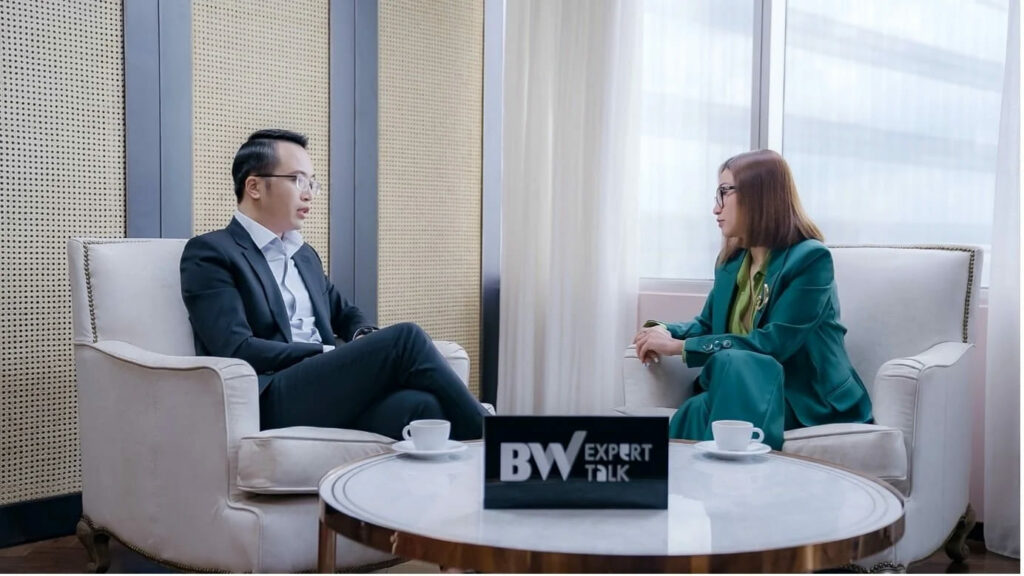ビジネス環境
Manufacturing In Vietnam – Assumptions Vs. Reality
7月 1, 2024

Minh Nguyen, BW Director – Leasing & Facilities Management and Host Nhi A.N at BW Expert Talk Series Eps 5
[5 min read]
Vietnam has emerged as one of Southeast Asia’s great success stories. A stable political system, commitment to sustainable growth, strong FDI inflows, youthful and digital population, and a strong manufacturing sector backs the country in its success.
The US-China Trade War and Covid-19 pandemic have urged companies to relocate production to avoid tariffs and needing to rely on a single market. These dynamic factors have created an extraordinary opportunity for international investors to take advantage of the regional growth perspective and focus their attention on Vietnam, particularly in the manufacturing sector.
This short Q&A with Mr. Minh Nguyen, Director of Leasing & Facilities Management at BW Industrial, will cover the manufacturing environment and the opportunities available for international investors that are interested in expanding their operations in Vietnam.
Overview of Manufacturing in Vietnam in 2022
General Director of the General Statistics Office (GSO), Nguyen Thi Huong, states that Vietnam’s GDP growth reached 8.02% in 2022, the highest record since 2011 as the economy is recovering strongly. The GDP per capita and labour productivity also grew to 95.6 million VND (4,110 USD), and 188.1 million VND (8,083 USD)/labourer, marking a year-on-year rise.
Vietnam’s industry-construction sector grew by 7.78%, contributing 38.24% while the service industry rose by 9.99%, making a 56.55% contribution to the economy. The macro-economy remained stable, with inflation put under control and major balances guaranteed. All of this contributed to socio-economic recovery and development, and improved the business environment and social security.
Investor Preferences Depending on Nationality
Investors from American and European countries prefer to rent ready-built-facilities while Asian countries like China, Japan, Korea prefer to own the land, considering it as an investment asset. However, with the COVID-19 pandemic, investors’ mindsets are changing as well.
Many investors now prefer to lease the facility, like those from the Americas and EU. In particular, Chinese and Hong Kong investors lease the building, which helps them to set up their business faster and exit faster if the worst case were to happen. As a result, this gives them more flexible terms on the location and the site.

BW Ready-Built Factory – My Phuoc 4 Project
How Long Does it Take to Set Up a Business in Vietnam?
In recent years, there have been massive flows of Foreign Direct Investment (FDI) coming into Vietnam. According to the Vietnam Ministry of Planning and Investment, FDI into Vietnam rose 13.5 percent from 2021, up to USD 22.4 billion in 2022. This is the largest amount in the past five years.
Meanwhile, FDI pledges, which shows the size of future FDI disbursements, dropped 11 percent year-on-year to USD 27.72 billion. The manufacturing sector is due to receive the largest amount of investment (57.9% of total pledges), followed by electricity, gas, hot water, steam and air conditioning (16.9%). Japan was the top source of FDI pledges to Vietnam, followed by Singapore and China.
With such significant FDI inflows into Vietnam recently, the government has become more selective. They now prefer clean, high-tech, and environmentally friendly industries. In fact, when the authorities review the application dossiers, they will review carefully to avoid attracting industries that will contribute to pollution. If some industries have polluted processes, they will require a plan of action from the investor, possibly leading to a longer set up time. This explains why the government tries to update the environment regulations and the fire fighting regulations.
Key Changes in Fire Fighting Regulations
The government tries to minimize the fire, and explosion cases to protect human life. Notably, the Vietnamese government issued the Decree No. 136/2020/ND-CP on Details and Guidelines for Fire Prevention and Fighting, which officially came into force on January 10, 2021.
This Decree mainly regulates the organization of fire prevention and fighting forces; such as equipment, management of fire prevention, fighting services, and responsibilities of parties. This once again emphasized the strict management of the state in fire prevention and fighting activities, which led to the significant changes in issuing firefighting certificate processes.
For instance, two years ago, when a client did renovations, they can apply for the firefighting certificate by themselves, and the tenants only need one or two weeks to get the certificate. Now, the government wants the landlord and the owner of the building to be more involved in the application dossiers and licensing. The landlord has to sign off and submit to the authority, which will take a longer time, up to 3-4 weeks or nearly two months to get the certificate.







